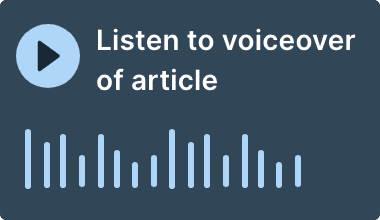Consider the journey of the humble coffee bean into your cup this morning. At least four years ago, the tree on which the bean grew was planted somewhere along the bean belt1 at altitudes between 800 and 2,200 metres. It was tended to and picked by farmers, then dried and shipped to local co-ops like this one where it was subject to quality control and segregation, husking, roasting and weighing before it was sold to wholesale distributors.
These wholesale distributors stored the beans in specialised climate-controlled warehouses to protect against extreme temperatures and humidity which would destroy the beans, after which they were repackaged and shipped to local distributors around the world. These local distributors used fleets of trucks and vans to move the packaged coffee to the coffee shop, where it was fed into a coffee grinder at a fine grind, filled into the portafilter of a coffee machine and blasted with nine bars of water pressure warmed to precisely 75 degrees Celsius. The process of getting the coffee from ‘bean to cup’, is known as its supply chain. The oversight of the risks inherent in supply chains and the exposure of their weaknesses brought about by excessive profit optimisation is the subject of this newsletter.
When it works well, it works well
As illustrated above, a supply chain is a complex combination of procurement, operations management, logistics and marketing necessary to convert raw materials into a finished product and deliver it to an end customer. In plain English it is the process of moving things and very much like IT, nobody is interested in it until it breaks. Also, it is a highly particular process, varying from industry to industry (shipping liquified natural gas involves an entirely different supply chain to shipping orange juice) and from product to product (our coffee bean example above is based on the arabica variety. The robusto variety, as the name suggests, does not need to be handled with as much care).
A well-functioning supply chain is analogous to a well-choreographed dance. Participants know their steps well, as well as the steps of the other dancers. If each dancer does their bit, the whole production comes together seamlessly. So seamless have supply chains been, that management attention over time shifted from supply chains as a risk to supply chains as a source of profit and expensive consultants were retained to identify lucrative margin gains:

These benefits appeared to be the business equivalent of a free lunch. Revenues grew from operations that were more efficient at routing stock to where it was needed. Margins improved from greater outsourcing, which led to more outsourcing, which in turn led to further margin gains. Improvements in transport infrastructure and demand forecasting tools helped companies buy less but more frequently, decreasing the amount of expensive inventory that had to be warehoused and increasing the speed-to-market of new products. The concept of ‘just-in-time inventory’, an inventory management technique designed to supply the inventory as close as possible in time to when it is actually needed, was born.
Breaker-of-chains
The challenge is that a system optimised for cost and speed is, by definition, not optimised for resilience. COVID-19 exposed this weakness, attacking the fragility of this model and triggering a domino effect. The years of outsourcing production to lower cost locations resulted in severe supply shortages when these producers were unable to produce and supply chains were unable to configure alternative sources quickly. As manufacturers of everything from cars to electronic hospital beds discovered, the choice became either to hold incomplete inventory or enter a prisoner’s dilemma scenario of paying higher prices to gain access to semiconductors rather than cede market share to competition. The concentration of production in cheaper locations also backfired. Years of accumulated knowledge and infrastructure was impossible to transplant quickly – Vietnam’s status as a key manufacturer of footwear and apparel was years in the making, a beneficiary of rising costs of production in China. This supplier concentration backfired thanks to a Government-mandated lockdown that crippled production in the hub for 15 weeks. The magnitude of this halt was staggering. Nike alone lost production of approximately 150 million units, which is the equivalent of giving a t-shirt, shorts and a pair of runners to every single person in Australia and New Zealand.
Transport infrastructure was also impacted. Ocean freight from the East to the West at the beginning of the pandemic offloaded its cargo in the West but did not return to the East. This caused a shortage of shipping containers where they were needed in Asia. Port congestion also played its part. A COVID-induced shortage of dock workers in key outbound ports such as Shanghai in China was met in kind at key inbound ports such as Hamburg in Germany and Long Beach in the United States, leading to Skyrocketing freight prices and a Build-up of ships waiting to have stock unloaded:

As the infrastructure creaked and groaned to deal with the backlog, it finally broke as major port staff and hauliers engaged in strike action, complaining about long hours, bad pay, high fuel costs and mandatory COVID-19 vaccines. As each node in the chain came under pressure, initial delays of days morphed into weeks and then into months. Eventually this impact was felt in the business accounts as inventory shortages were blamed for weak sales and margins were punished by inflated freight rates and higher input costs.
Just-in-Time or Just-in-Case?
Companies spent years optimising supply chains, squeezing inefficiencies out in the name of profit only to be undone by a global pandemic that raised questions as to how supply chains ought to function. Many businesses were surprised that their supply chain audits were much less resilient than they had expected and companies are now scrambling to reverse much of their good work. Supply chains are being redesigned to spread the manufacturing footprint and diversify suppliers, Governments are offering sweet incentives to tempt key industries to produce domestically and companies are establishing global supply chain resiliency teams and auditing not only their own suppliers, but their suppliers’ suppliers too.
As the engines of international trade recover and the flow of goods returns to pre-pandemic levels, it is important to reflect on the lessons we have learnt about supply chain risk. Traditional priorities of cost and speed will need to be re-examined and balanced against supply chain resilience, which means that the tolerance for ‘inefficiency’ must increase. Portfolio managers too cannot ignore this problem and will have to consider how supply chain risk is expressed in their portfolios. While the best way to avoid supply chain risk is to avoid supply chains, this is not practical advice. A more nuanced approach is necessary; where consideration is given to the complexity of the supply chains, the degree to which substitute components are feasible, the presence of strong pricing power to support margins and a business-critical-non-core product that discourages customers from searching for alternatives. Most of all, it requires the portfolio manager to distinguish between bad results that are a reflection of temporary overhangs and bad results that are signals of a fundamental deterioration in the business.
MJ Faherty,
1 March 2023
1The bean belt refers to the three primary coffee growing regions (Central and South America, Africa and the Middle East and Southeast Asia) that are all located along the equatorial zone between the Tropic of Cancer and the Tropic of Capricorn.
Any forecasts, opinions, goals, strategies, outlooks and or estimates and expectations or other non-historical commentary contained herein or expressed in this document are based on current forecasts, opinions and or estimates and expectations only, and are considered “forward looking statements”. Forward-looking statements are subject to risks and uncertainties that may cause actual future results to be different from expectations. Nothing in this newsletter is a recommendation for a particular stock. The views, forecasts, opinions and or estimates and expectations expressed in this document are a reflection of Seilern Investment Management Ltd’s best judgment as of the date of this communication’s publication, and are subject to change. No responsibility or liability shall be accepted for amending, correcting, or updating any information or forecasts, opinions and or estimates and expectations contained herein.
Please be aware that past performance should not be seen as an indication of future performance. Any financial instrument included in this website could be considered high risk and investors may not get back all of their original investment. The value of any investments and or financial instruments included in this website and the income derived from them may fluctuate and you may not receive back the amount originally invested. In addition stock market fluctuations and currency movements may also affect the value of investments.
Get the latest insights & events direct to your inbox
"*" indicates required fields





